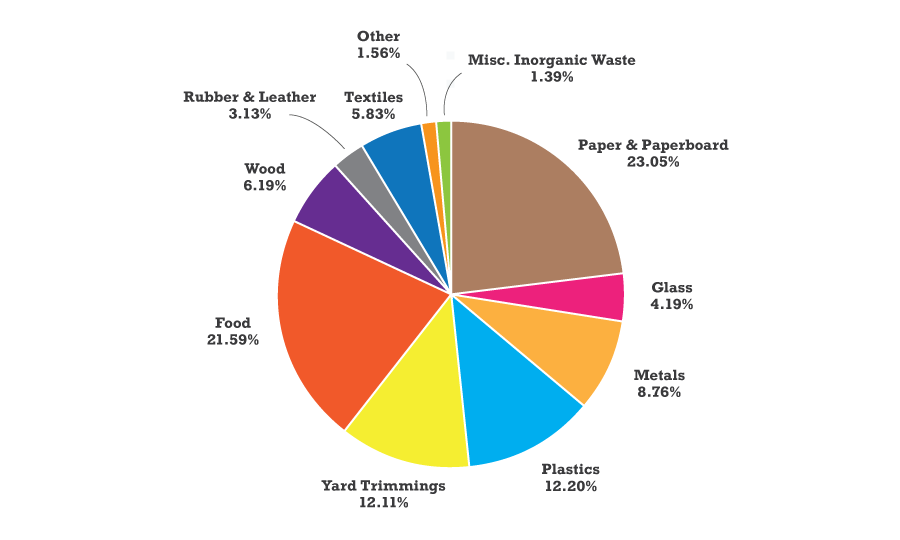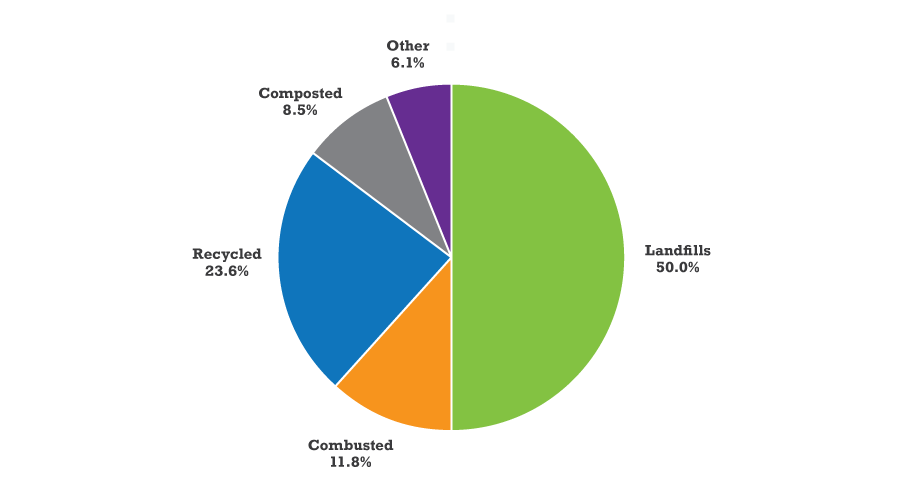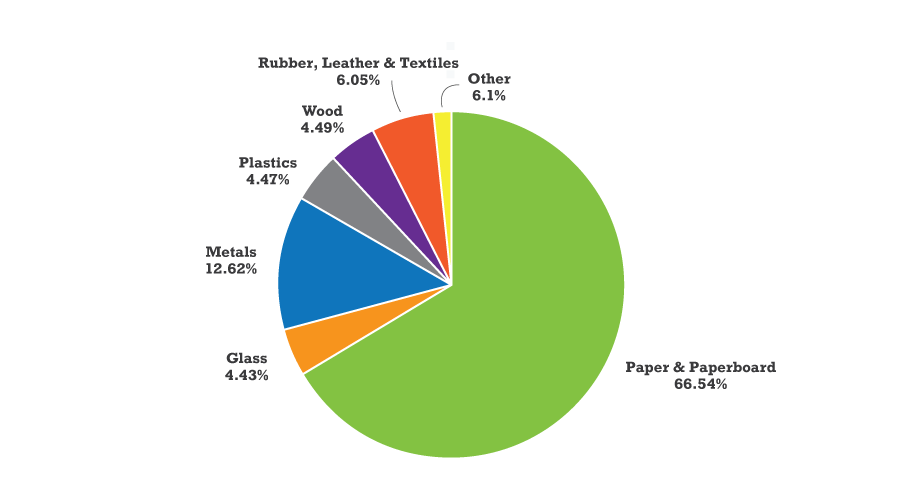
Where Does Garbage Go?
Where Does Trash Go in the US?
You need to get rid of stuff around the house, whether you’re decluttering, remodeling or simply tossing weekly trash. But where does trash go once you’ve thrown it away?
The United States generated 292.4 million tons of municipal solid waste (MSW) in 2018, which equals 4.9 pounds of waste per person each day. MSW includes common household and commercial garbage, like food waste, paper, yard debris, appliances and furniture.
View the United States Trash Journey

Total MSW Generated by Material - 2018
292.4 Million Tons
Where Do Garbage Trucks Take Trash?
So, where does your trash go? Once you’ve put your garbage can on your curb or thrown it in a dumpster, garbage trucks take it to one of two places: transfer stations or material recovery centers.
Transfer Stations
At transfer stations, garbage is dropped off and compacted before being reloaded onto a larger truck. Several garbage trucks worth of trash are loaded onto the new truck before it continues its journey to a waste disposal facility.
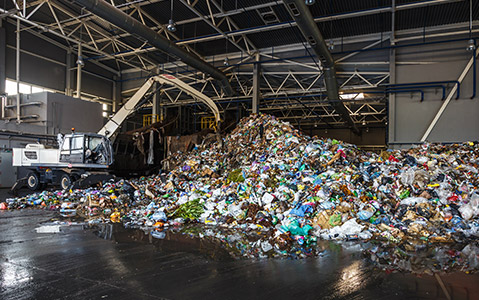
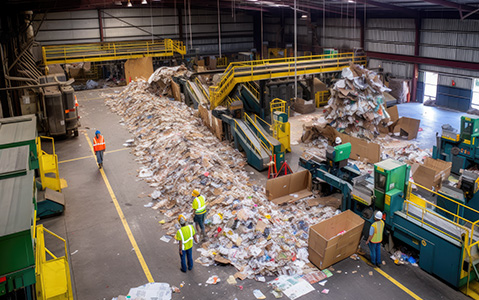
Material Recovery Facilities
Material recovery facilities (MRFs) are locations where debris is sorted to separate useful materials from the waste stream before it reaches its final destination. There are two types of MRFs — clean and dirty.
Clean MRFs
Clean MRFs receive recyclables that have already been sorted at homes or businesses. Depending on the size of the MRF, the facility can process between 50 and 200 tons of recyclables a day. More than 90% of these recyclables are prepared for sale after sorting.
Dirty MRFs
Dirty MRFs process recyclable items that have been mixed with trash, which requires more manual labor for sorting. State-of-the-art MRFs incorporate a variety of technologies to recover recyclables, such as magnets, shredders and current separators (for sorting ferrous and non-ferrous metals).
A dirty MRF can process between 200 and 700 tons of MSW a day, with less than 50% of the waste being recovered as recyclable. The rest of the MSW is then sent to landfills or other disposal facilities.
Where Does Trash End Up?
Where garbage ends up varies widely among regions, states and even cities. There are five key waste disposal facilities that your trash ends up in: landfills, recycling facilities, composters, waste-to-energy plants and anaerobic digesters.
Percent of MSW in Waste Facilities
The landfill is the most popular destination for solid waste, by a wide margin. Some cities, like San Francisco, are able to recycle more than they send to landfills, but the majority of the U.S. sends its trash to the dump. Beyond landfills, waste also goes to recycling centers, composters and waste-to-energy plants.
1. Landfills
As of 2024, there are 2,635 landfills in the U.S. About 50% of U.S. MSW ends up in one of these facilities. But what happens to trash in landfills?
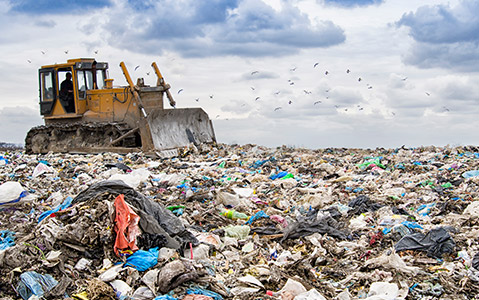
Landfills are designed to store waste but not to break it down. They are made up of layers of trash, thin plastic and soil, with drains and pipes crisscrossing each layer to collect the contaminated fluid created by garbage. Trash is first compressed and placed on top of a layer of clay and plastic. Then, soil is layered on top of the trash. This process is repeated until the landfill is full. Lastly, another layer of clay and plastic is added and topped off with several feet of dirt and plants. Over time, some of the trash may decompose but mostly the landfill is used to simply contain the garbage.
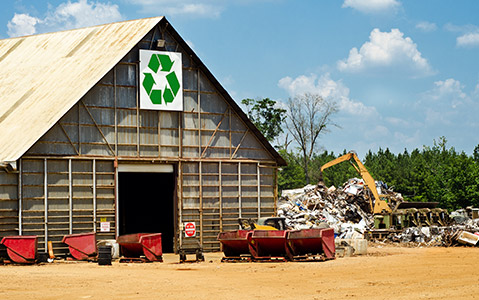
2. Recycling Facilities
Recycling facilities generally focus on processing aluminum, plastics, paper and glass. After these recyclables have been processed at an MRF, they are made into new products for reuse.
About 23% of MSW ends up in a recycling facility. In 2020, the U.S. Environmental Protection Agency (EPA) announced the U.S. National Recycling Goal, which is to increase the recycling rate to 50% by 2030.
Total MSW Recycling by Material - 2018
69.1 Million Tons
3. Composters
Organic materials, like food waste and yard debris, may end up at a composting facility. Composting is the decomposition of organic materials using oxygen and microorganisms. Compost — the soil created from decomposed food and yard waste — is then used by individuals and businesses to enrich their soil.
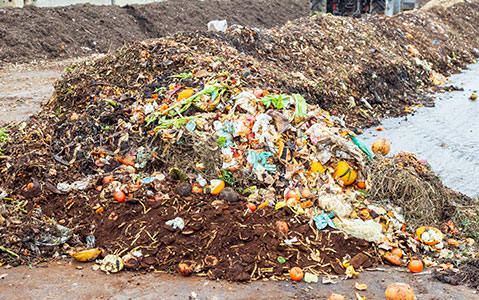
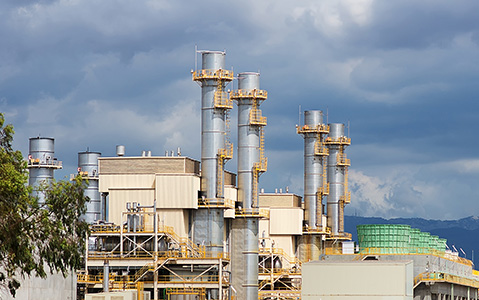
4. Waste-to-Energy Plants or Trash Incinerators
At a waste-to-energy plant, MSW is burned in order to produce steam. The steam is then used to power an electric generator turbine. This process reduces the original volume of waste by 87%, significantly reducing the amount of landfill space needed.
5. Anaerobic Digesters
Another form of waste-to-energy conversion is through anaerobic digestion, a biological process using microorganisms to turn organic materials into energy and fertilizer. Anaerobic digestion differs from composting by not using oxygen to process organic materials.
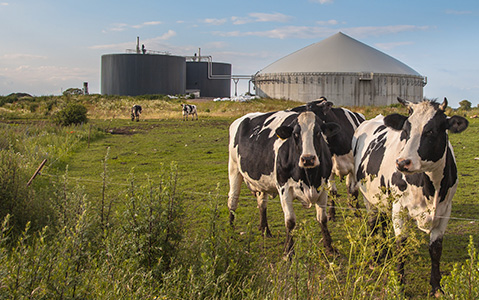
This process takes place in large tanks called anaerobic digesters. They’re most commonly found on farms, where organic waste is readily available, though some accept food waste from restaurants, grocery stores and even entire communities. Wastewater treatment plants also use digesters to produce energy for the local power grid. Instead of using food or agricultural waste as a feedstock, wastewater facilities use organics-rich sewage.
What About Trash That Can't Be Thrown Away?
What happens to trash if it doesn’t go to one of these facilities? Some materials, like certain batteries, mattresses and hazardous waste, can’t be tossed in the same way as MSW because they pose safety concerns. For example, batteries can be returned to certain retail stores or auto shops or they can be disposed of in a household hazardous waste facility.
Learning the proper way to dispose of these materials can help protect both you and the environment.
How Proper Disposal Helps Your Trash Get to the Right Place
Check out our disposal guides to learn how to properly get rid of your waste:
Current Trends in the Waste Management Industry
So, what happens to trash after you throw it away? As it stands, the majority of U.S. garbage ends up in landfills. However with current waste trends, less garbage is heading that way. From zero waste to global exporting, find out where your trash is moving in the 21st century.
Recycling and Zero Waste
As recycling facilities and waste-to-energy plants become more cost-effective, cities are setting zero waste goals and individuals are working to reduce their carbon footprint. In addition, new waste industry trends shared by Waste360 demonstrate how technology developments can make disposal and recycling processes more efficient and prevalent across the U.S.
Since 2005, annual U.S. MSW generation rates have plateaued while recycling rates continue to increase. If these trends continue, we can expect a decrease in the amount of garbage ending up in landfills over this century.
E-Waste
Electronic waste, or e-waste, is unwanted or broken electronic parts, including computers, fax machines and cellphones. Since some of these materials include hazardous waste, E-waste poses health and environmental risks when thrown away improperly. Areas where e-waste is discarded often have higher levels of toxicity.
According to the United Nations, 62 million tons of e-waste were tossed throughout the world in 2022 — an 82% increase from 2010.
Not sure how to properly get rid of your electronics? Check out our Electronics Disposal Guide!
Global Exporting
Sometimes your trash is sent to landfills or recycled and reused, but other times your trash ends up overseas. About 2% of the world’s waste is exported to other countries.
The U.S. sends about 751,000 tons of waste abroad each year, with most of the waste going to developing countries. Often these countries don’t have the infrastructure to properly reuse or store this waste, leading to environmental and health risks.
In 1988, the U.N. negotiated the Basel Convention on the Control of Transboundary Movements of Hazardous Wastes and their Disposal, which provides standards for international trade of hazardous waste, solid waste and municipal incinerator ash. As of 2020, 187 countries joined the Convention. As the 21st century continues, we see more disposal trends and regulations that aim to keep people and the environment safe.
Help the US Reach its National Recycling Goal
Right now, 50% of U.S. MSW ends up in landfills and only 23% is recycled. To help flip this statistic, learn how to reduce waste at home and check out our recycling guides.
